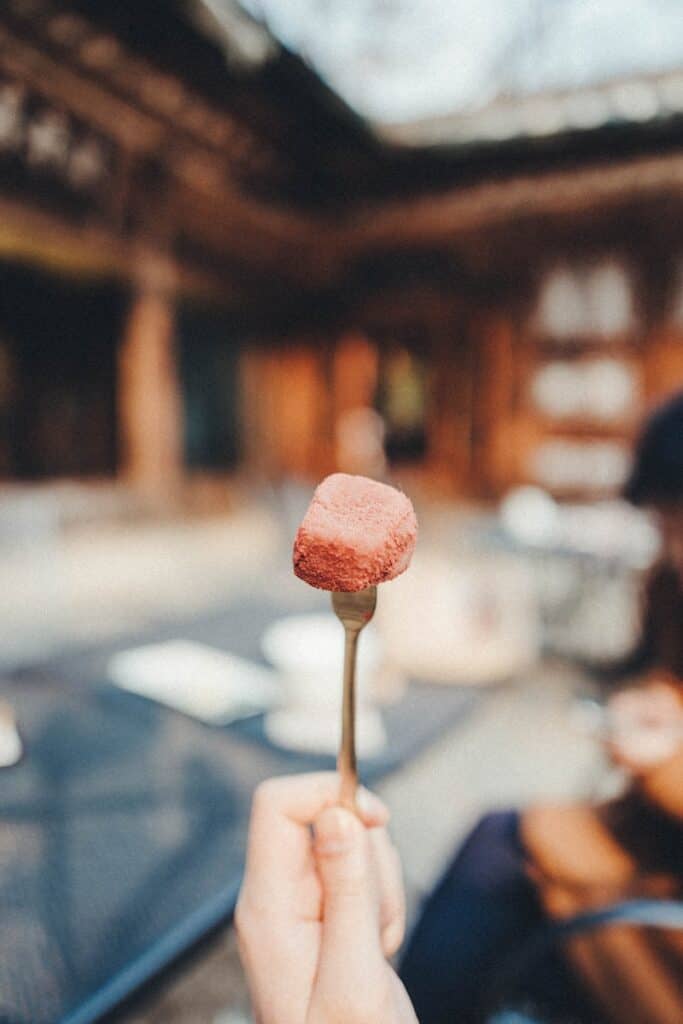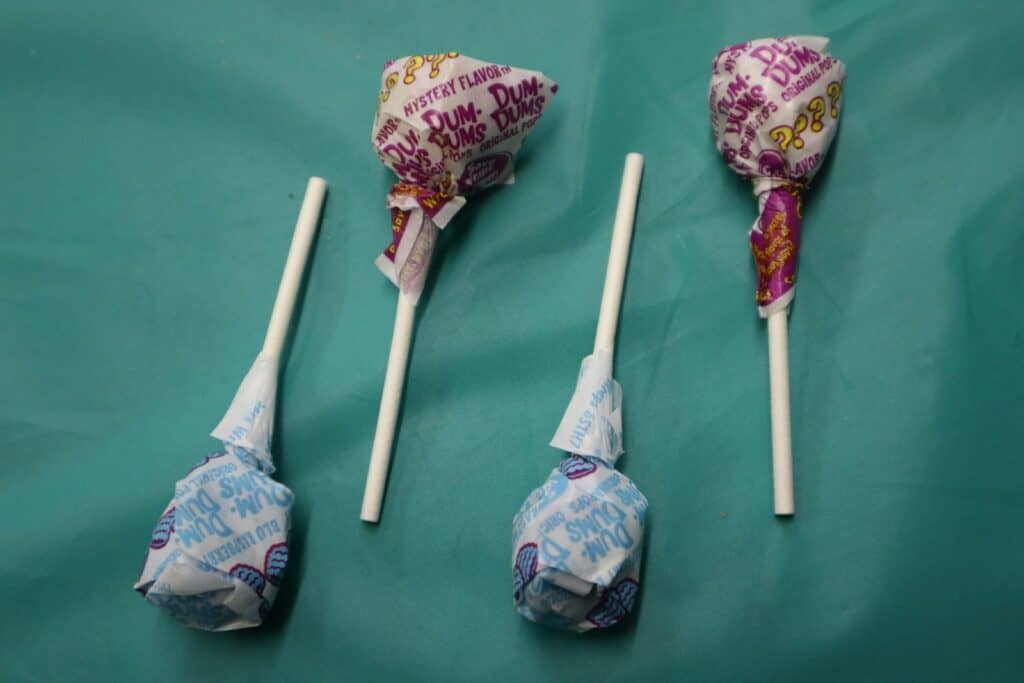Вы когда-нибудь задумывались, почему традиционные старомодные леденцы имеют идеальный, похожий на стекло, хруст? Другие же могут быть хрупкими или липкими. Ответ - не магия, а химия и физика. Это не путешествие в прошлое. Это глубокое погружение в наука о конфетах изготовление.
В этой статье мы рассмотрим техническую сторону старомодных леденцов. Мы рассмотрим все - от поведения молекул сахара до физики конечного продукта. Понимание этой науки поможет вам оценить их уникальное качество. Возможно, вы даже сможете воссоздать их с точностью до мелочей.
Мы изучим основные ингредиенты и их химическую роль. Вы освоите важнейшие этапы приготовления. Мы проанализируем, что делает леденец идеальным, и сравним старые и современные методы производства.
Техническое определение
Чтобы проанализировать старомодный леденец, нам нужна техническая отправная точка. Мы определяем его по его отличительным физическим и химическим свойствам, а не по его истории. Такой подход выходит за рамки смутной ностальгии. Он дает нам конкретные качества для изучения.
Основной состав
Прелесть традиционного леденца заключается в его простой формуле. В основном это сахароза (столовый сахар), вода и важнейший "интерферирующий агент".
Обычно это кислота, например, винный камень, или инвертный сахар, например, кукурузный сироп. Каждый ингредиент выполняет определенную химическую работу. Сахароза обеспечивает структуру. Вода выступает в качестве исходного растворителя. Вмешивающийся агент контролирует конечную текстуру.
Физические характеристики
Старомодный леденец имеет твердую, нелипкую текстуру. При разламывании он издает чистый "щелчок". Это признак того, что во время приготовления леденцы достигли нужной стадии твердости.
Он выглядит кристально прозрачным. Этот похожий на стекло вид свидетельствует о некристаллической, или аморфной, структуре сахара. Мутный или непрозрачный леденец означает, что кристаллизация не контролировалась должным образом.
Аромат часто бывает простым и ясным. Ароматизаторы должны выдерживать очень высокие температуры. Именно поэтому часто используются эфирные масла и некоторые крепкие экстракты.
Вот основные технические показатели:
- Чистота ингредиентов: Сукроза, вода и агент-интерферент.
- Структурное состояние: Аморфное твердое вещество (сахарное стекло).
- Тепловой бенчмарк: Достигает стадии "твердой трещины" (~300-310°F / 149-154°C).
- Сенсорный профиль: Хрупкая текстура с незернистым, идеально гладким вкусом.
Химия сахара
Изготовление конфет - это прикладная химия. Чтобы создать безупречный старомодный леденец, вы должны понимать, как ведут себя молекулы сахара. Это основа всех твердых конфет.
Сахароза и вода
Процесс начинается с растворения сахарозы в воде. Таким образом, получается простой раствор сахара. Далее задача состоит в том, чтобы выкипятить почти всю воду, тщательно управляя поведением оставшихся молекул сахарозы.
Роль "врачевания"
Основная проблема при изготовлении твердых конфет - предотвращение нежелательной кристаллизации. При испарении воды и повышении концентрации сахара молекулы сахарозы естественным образом стремятся вернуться в жесткую, упорядоченную кристаллическую решетку.
В этом случае конфеты получаются зернистыми, непрозрачными и структурно слабыми. Чтобы предотвратить это, мы используем "дозирование" - добавление интерферирующего агента.
Инверсия сахара приобретает здесь решающее значение. Добавление кислоты, например винного камня, и нагревание расщепляют некоторые молекулы сахарозы на две составляющие: глюкозу и фруктозу. Это называется инверсией.
Аналогичный эффект достигается добавлением кукурузного сиропа, который уже содержит глюкозу. Эти "мешающие" молекулы глюкозы и фруктозы встают на пути молекул сахарозы. Они нарушают аккуратную решетчатую структуру, которую пытается сформировать сахароза. Это предотвращает кристаллизацию и обеспечивает прозрачный, похожий на стекло конечный продукт.
Состояние перенасыщения
При кипячении раствора вода выделяется в виде пара. Соотношение сахара и воды резко возрастает. Раствор становится перенасыщенным - в нем содержится больше растворенного сахара, чем обычно при этой температуре.
Это нестабильное, перенасыщенное состояние очень важно. Оно позволяет жидкости при охлаждении превращаться в твердое, стеклообразное состояние, а не оставаться густым сиропом.
Наука повара
Химическая теория встречается с практикой на плите. Освоение кулинарии средства контроля температуры и предотвращает преждевременную кристаллизацию. Это научная процедура, замаскированная под кулинарное искусство.
Техническое руководство
Мы подходим к этому с методической точностью. Каждый шаг управляет состоянием сахарного раствора.
- Растворение: Сначала слегка подогрейте сахар, воду и кукурузный сироп (или крем с винным камнем). Помешивайте, пока каждый кристаллик сахара не растворится. Это должно произойти до раствор закипает.
- Предотвращение посева: Даже один нерастворенный кристалл на боку кастрюли может вызвать цепную реакцию кристаллизации и испортить всю партию. Протрите внутренние стенки влажной кондитерской кистью, чтобы удалить блуждающие кристаллы.
- Кипячение: Как только раствор станет прозрачным и закипит, полностью прекратите перемешивание. Мешание способствует образованию кристаллов. В дальнейшем единственным ориентиром будет калиброванный термометр для конфет.
- Достижение твердой трещины: Наблюдайте, как температура поднимается, проходя стадии мягкого, твердого и жесткого шара. Ваша цель - стадия твердых трещин - очень специфическое и неумолимое температурное окно.
Температура как элемент управления
Температура - самая важная переменная. Она напрямую измеряет концентрацию сахара в сиропе. При повышении температуры содержание воды уменьшается.
Сцена | Температура (°F) | Температура (°C) | Техническое описание |
Мягкий мяч | 235-245°F | 112-116°C | Формирует мягкий, податливый шар |
Твердый мяч | 245-250°F | 118-120°C | Сформируйте плотный шар; для карамели |
Твердый шар | 250-265°F | 121-129°C | Формирует твердый, но все еще податливый шар |
Твердая трещина | 300-310°F | 149-154°C | Образуются хрупкие нити; содержание воды <1% |
На стадии твердых трещин концентрация сахара достигает примерно 99%. Это чрезвычайно низкое содержание влаги создает хрупкую, нелипкую и стеклянную текстуру настоящего старомодного леденца. Несколько градусов слишком низкой температуры - и леденец будет липким. Слишком высокая температура - и леденец будет липким. сахар начнет карамелизироваться и станет янтарь.
Физика щелчка
Идеальный старомодный леденец - это не просто конфета, а съедобное стекло. Понимание его физического состояния открывает удивительную связь между кухней и материаловедением. Это объясняет происхождение его фирменного "щелчка".
Не кристалл, а бокал
Существует фундаментальное различие между кристаллическим и аморфным твердым телом. Кристаллическое твердое вещество, например каменная конфета или кубик сахара, имеет высокоупорядоченную, повторяющуюся молекулярную структуру.
Аморфное твердое вещество, или стекло, имеет неупорядоченную, случайную молекулярную структуру. Молекулы перемешаны друг с другом без дальнего порядка. Леденец имеет такую же структуру, как и оконное стекло.
Представьте себе переполненную комнату. В кристаллическом теле люди расположены аккуратными рядами и колоннами. В аморфном теле они застыли в случайных позах, которые они занимали, когда музыка внезапно прекратилась.
Роль быстрого охлаждения
Охлаждение расплавленного сахарного сиропа быстро имеет решающее значение для достижения этого стеклообразного состояния. Этот процесс называется витрификацией.
Выливая горячий сироп на холодную поверхность или в формы, мы понижаем его температуру настолько быстро, что неупорядоченные молекулы сахара "застывают" на месте. У них нет ни времени, ни энергии, чтобы выстроиться в упорядоченную кристаллическую решетку.
Температура перехода стекла
Это приводит нас к температуре стеклования (Tg). Это не точка плавления. Это определенная температура, ниже которой жидкая, неупорядоченная структура превращается в жесткое, хрупкое твердое тело.
Для твердых конфет Tg намного выше комнатной температуры. Именно поэтому леденцы твердые, твердые и стеклянные, когда вы держите их в руках. Конфеты с более низкой Tg, из-за большего содержания воды, будут мягкими и жевательными, как карамель.
Сенсорное расстройство
Почему старомодные леденцы на ощупь, на вкус и на вид такие, какие они есть? Ответ на каждый сенсорный вопрос кроется в химии и физике, которые мы изучили. Человеческий опыт - это прямой результат материальной науки.
Вкус и текстура
Идеально гладкая поверхность леденца - прямое следствие его аморфной стеклянной структуры. Язык не чувствует никаких кристаллических граней.
Именно поэтому хорошо сделанный леденец кажется гладким и бесшовным. Плохо сделанный леденец имеет "зернистую" или "песочную" текстуру. Эта зернистость - ощущение кристаллов сахара на нёбе. Чистый щелчок при откусывании - это излом хрупкого, стекловидного материала.
Наука вкуса
Чрезвычайно высокая температура приготовления 300-310°F предъявляет значительные требования к ароматизаторам. Многие деликатные ароматические соединения не выдерживают такой температуры. Они разрушаются или "запекаются", теряя свою силу.
Именно поэтому натуральные эфирные масла - мятное, лимонное или апельсиновое - являются классическим вариантом. Они высококонцентрированы и относительно термостабильны. В отличие от некоторых синтетических ароматических соединений, которые более летучи. Требование термостабильности часто приводит к более "чистому" и прямому вкусовому профилю, характерному для традиционных леденцов.
Визуальная привлекательность
Прозрачность леденца, напоминающая драгоценный камень, также обусловлена его физикой. В некристаллической структуре нет кристаллических границ, рассеивающих и отражающих свет.
Свет проходит прямо через конфету, как через оконное стекло. Благодаря этому леденец выглядит прозрачным и блестящим. Любое помутнение - признак нежелательных микрокристаллов, рассеивающих свет.
Старое и новое производство
Принципы Наука о сахаре универсальна. Но их применение сильно различается между мелкими ремесленниками и крупными промышленными заводами. Понимание этих различий подчеркивает технические компромиссы в современном производстве.
Характеристика | Традиционный / "старомодный" метод | Современный промышленный метод |
Кулинария | Мелкосерийное приготовление в открытом котелке. Полагается на умелое наблюдение и точный контроль температуры. | Вакуумные плиты непрерывного действия. Быстрое, эффективное и высокоавтоматизированное производство. |
Ингредиенты | Простой: Сахар, вода, кукурузный сироп/кислота. Часто используются натуральные ароматизаторы. | Часто включает в себя более широкий спектр сиропов глюкозы, искусственных ароматизаторов, красителей и консервантов. |
Контроль кристаллизации | В первую очередь, это лечится "дозировкой" кислоты/инвертного сахара и тщательной техникой. | Точно рассчитанные сиропы и добавки обеспечивают постоянство в огромных масштабах. |
Формирование | Ручная заливка, формовка или придание формы. Более медленный процесс. | Высокоскоростной машины для нанесения или штамповки. |
Результирующая текстура | Благодаря тщательному контролю можно добиться превосходной прозрачности и очень хрупкого "щелчка". | Высококонсистентные, но могут быть разработаны для обеспечения прочности (менее хрупкие), а не идеальной текстуры стекла. |
Современные методы обеспечивают невероятную эффективность и последовательность. Но традиционный метод, если он выполнен с мастерством, позволяет достичь уровня точности, который может привести к превосходной стеклянной текстуре.
Заключение
Уникальные свойства старомодного леденца не случайны. Они являются прямым и целенаправленным результатом контролируемой химии и физики.
Мы видели, как предотвращение кристаллизации, точное достижение стадии твердой трещины и быстрое охлаждение являются основой его создания. Эти шаги вместе превращают простой сахарный сироп в стабильное съедобное стекло.
Оценить настоящий старомодный леденец - значит оценить мастерское применение науки. Идеальный щелчок, гладкая текстура и кристально чистый внешний вид - все это свидетельство точного контроля над состоянием материала. Это простое удовольствие, рожденное на основе сложных принципов.
Справочные ссылки:
- Американское химическое общество - Сладкая наука: Веселимся с химией конфет https://www.acs.org/acs-webinars/library/candy-chemistry.html
- Журнал Химическое образование - Химия конфет: Сладкий подход к обучению https://pubs.acs.org/doi/10.1021/acs.jchemed.7b00739
- UCSF SugarScience - Сладкая наука. Неподслащенные истины. https://sugarscience.ucsf.edu/
- Факты о химической безопасности - Наука о конфетах: Химия сахара https://www.chemicalsafetyfacts.org/health-and-safety/the-science-of-candy-sugar-chemistry/
- Сложные проценты - Национальная неделя химии: Химия конфет https://www.compoundchem.com/2014/10/21/chemistryofcandy/
- AACT (Американская ассоциация преподавателей химии) - ChemClub Candy https://teachchemistry.org/chemclub/themes/candy
- Институт кулинарного образования - Сахарная наука: Искусство изготовления конфет https://www.ice.edu/blog/sugar-science
- TeachEngineering - Rock Candy Your Body: Exploring Crystallization https://www.teachengineering.org/activities/view/uoh_crystals_lesson01_activity1
- Научные друзья - Выращивание кристаллов горного хрусталя https://www.sciencebuddies.org/science-fair-projects/project-ideas/FoodSci_p005/cooking-food-science/growing-rock-candy-crystals
- Carolina Knowledge - Rock Candy: Съедобное исследование кристаллизации https://knowledge.carolina.com/discipline/physical-science/chemistry/rock-candy-an-edible-study-of-crystallization/







